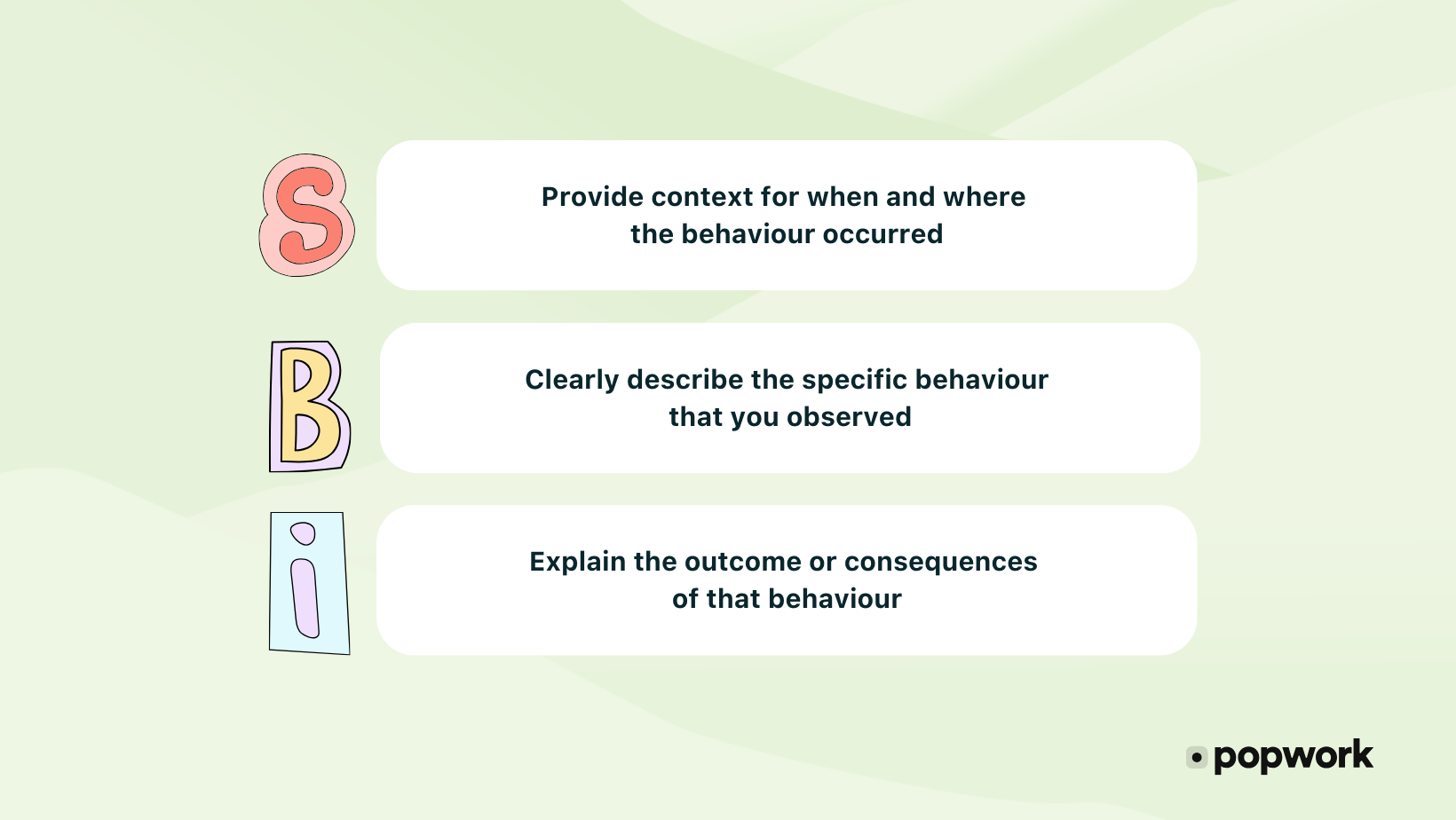In the fast-paced world of business management, effective communication is key to organisational success. One of the most impactful ways to foster growth and continuous improvement is through a structured feedback process. The SBI Feedback Methodology, standing for "Situation, Behaviour, Impact," offers a straightforward yet powerful approach to delivering constructive feedback that drives real change. It is used in companies with renowned feedback cultures such as Google. In this article, we'll explore how SBI works, why it’s effective, and how to apply it in a management context.
What is the SBI Feedback Methodology?
The SBI Feedback Methodology is a structured framework designed to provide clear, actionable feedback. It helps avoid the ambiguity that often arises in traditional feedback conversations and creates an environment where employees feel valued and motivated to improve. The structure of SBI ensures that feedback is specific, context-rich, and focused on the tangible outcomes of behaviour.
The methodology breaks feedback into three key components:
- Situation: Provide context for when and where the behaviour occurred.
- Behaviour: Clearly describe the specific behaviour that you observed.
- Impact: Explain the outcome or consequences of that behaviour.

Breaking Down the SBI Framework
- Situation
Next, describe the situation in which the behaviour occurred. Providing context is important because it helps the recipient understand when and where the behaviour was observed, making it easier to recall and reflect upon. For example: “During our project kick-off meeting last Tuesday...” This component grounds the feedback in a specific moment, making it more actionable.
- Behaviour
The first step in providing feedback is to focus on the behaviour itself, not the person. It’s crucial to be as specific as possible. Instead of saying, “You’re always late,” specify the exact behaviour: “I noticed that you arrived 15 minutes late to the team meeting on Monday.” This approach helps in keeping the discussion objective and removes the potential for defensiveness by concentrating on actions rather than character.
- Impact
Finally, articulate the impact of the behaviour. Explaining how the behaviour affected the team, the project, or the organisation highlights why the feedback matters. For instance: “When you were late, it delayed the start of the meeting, which affected the schedule for the rest of the day.” The impact statement helps the recipient understand the broader implications of their actions, encouraging them to consider the effects on others.
Why SBI is Effective
The SBI Feedback Methodology is effective for several reasons:
- Clarity: By breaking down feedback into behaviour, situation, and impact, the message is conveyed clearly, leaving little room for misinterpretation.
- Objectivity: Focusing on specific behaviours rather than personal attributes keeps feedback objective and reduces defensiveness.
- Action-Oriented: The framework makes it easier for recipients to understand what needs to change, fostering personal development and encouraging continuous improvement.
- Positive Reinforcement: SBI can be used not only for constructive feedback but also for positive reinforcement. Highlighting behaviours that have a positive impact can motivate employees and reinforce desirable actions.
Applying SBI in Management
As a manager, effectively utilising the SBI Feedback Methodology can greatly enhance your communication with your team. Here are some practical tips for implementing SBI:
- Prepare in Advance
Before providing feedback, take a moment to plan your SBI structure. Reflect on the specific behaviour, the situation, and the impact. This preparation ensures that your message is clear and concise.
- Balance Positive and Constructive Feedback
SBI works well for both positive and negative feedback. Balancing constructive feedback with positive reinforcement helps create an environment where employees feel both supported and challenged.
- Practice Active Listening
Feedback should be a two-way conversation. After providing SBI feedback, invite the recipient to share their perspective. This encourages open dialogue and helps build trust between you and your team.
- Follow Up
After providing feedback, follow up to see if any progress has been made or if additional support is needed. This shows that you are invested in the employee's development and reinforces the importance of continuous improvement.
Example of SBI in Action
Let’s look at an example of SBI in action. Imagine one of your team members frequently interrupts others during meetings:
- Situation: “This happened during our weekly project updates.”
- Behaviour: “I noticed that during our last three meetings, you spoke over others when they were sharing their ideas.”
- Impact: “When this happens, it makes it difficult for everyone to contribute, and it can discourage others from sharing their thoughts.”
By using SBI, you’re providing specific, actionable feedback that the recipient can understand and act upon. This not only clarifies the behaviour but also encourages the employee to make a positive change.
The SBI Feedback Methodology is a simple yet effective tool for managers who want to foster an environment of continuous growth and improvement. By focusing on specific behaviours, providing context, and explaining the impact, you can ensure that your feedback is clear, objective, and actionable. Whether you’re addressing areas for improvement or celebrating achievements, SBI helps you communicate in a way that promotes understanding, accountability, and positive change.
The Popwork continuous feedback platform provides templates and an AI feedback assistant to help you draft great SBI feedback. Start incorporating SBI in your management practices today, and watch your team’s communication and performance flourish.

